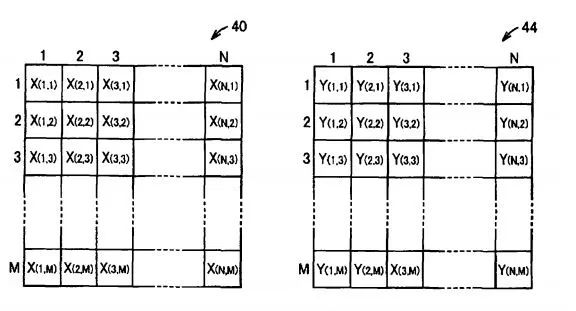This decision concerns an European patent application for image data arrangement, which was considered non-technical by the EPO. Here are the practical takeaways from the decision T 1294/16 (Image data arrangement/OMRON) of March 10, 2021 by the Technical Board of Appeal 3.5.06:
Key takeaways
It is of constant jurisprudence that only features contributing to the solution of a technical problem by providing a technical effect can contribute towards a finding of inventive step.
Differences in mathematics can lead to a finding of inventive step only if they contribute to defining a technical solution in a field of technology not excluded under Articles 52(2) and (3) EPC.
The invention
The application relates to the detection of patterns on products in manufacturing context. Starting from the known technique of using normalized cross correlation (NCC) to detect known patterns in grayscale images, the application aims at providing a robust NCC method for color images. For this purpose, the 3-color image is transformed into a 2D or 1D matrix by rearranging the values according to predetermined rules. The NCC is then computed on this matrix.

Fig. 3 of EP1783664

Fig. 4 of EP1783664
Here is how the invention was defined in claim 1:
Claim 1 (main request)
An image processing device (1) for specifying a region in an input image based on a correlation value with a model image; the image processing device (1) comprising:
an input image acquiring means (2) adapted to acquire the input image made up of a plurality of pixels defined by three color variables in which each color is independent from each other;
a determination target region setting means adapted to set a determination target region (OBJ) in the input image, the determination target region (OBJ) having a size equal to the model image acquired in advance;
a first data array transformation means adapted to arrange at least two of the three color variables of each pixel contained in the determination target region (OBJ) in a single first data array (40) according to a predetermined rule;
a correlation value calculating means adapted to calculate the correlation value between the single first data array (40) and a single second data array (44) in which at least two of the three color variables of each pixel configuring the model image are arranged according to the predetermined rule; wherein
the determination target region setting means are adapted to sequentially move the determination target region (OBJ) in a search region (SEARCH) of the input image, and to repeatedly execute, for every movement of the determination target region (OBJ), the processes in the first data array transformation means and the correlation value calculating means; and
a determining means adapted to specify the determination target region (OBJ) having high correlation value with the model image based on a comparison between the correlation value calculated for every movement of the determination target region and a predetermined threshold value, and to output the total number of specified determination target regions (OBJ) and/or each position of the specified determination target regions (OBJ) when the movement of the determination target region is completed.
Is it patentable?
The Board considers claim 1 of the main request obvious in view of D1/D2.
The more interesting discussion for us is about the first auxiliary request:
21. This request differs from the main request in that it defines two alternative rules of arranging the color values in a single data array.
22. This arranging does not change the result of the color NCC, which remains identical to that of D1, as the order of the elements is irrelevant for the result of the computation (compare equation 2 of D1 with equations 1 and 4 in the application). This was not contested by the appellant. There is therefore no technical effect in terms of the results of the detection procedure.
The appellant argued why D1/D2/D7 do not solve the same problem. Furthermore, the appellant argued the following:
24. Moreover, there was no requirement under Article 56 EPC of a technical effect. Even if a technical effect was not acknowledged, the claim should be recognized as compliant with Article 56 EPC (1973) because it was not obvious. Starting from D1 or D2 there was no pointer to the specific data arrangements claimed.
However, the above-given argument was not shared by the Board:
25. In response to this second point, the Board recalls that it is of constant jurisprudence that only features contributing to the solution of a technical problem by providing a technical effect can contribute towards a finding of inventive step (T 0641/00 Two identities/COMVIK, point 6). This is because the EPC provides for protection of inventions, which require a technical solution to a technical problem (Rule 27(1)(c) EPC 1973). It is the (claimed) invention, i.e. the technical solution, that needs to involve an inventive step (Articles 52 EPC and 56 EPC 1973) for a patent to be granted.
Finally, the Board considers that the distinguishing feature of claim 1 of the first auxiliary request has no technical effect:
26.2 The Board does not dispute that a technical effect might be obtained under some circumstances. But this is not sufficient for acknowledging an inventive step, because those circumstances are not claimed (nor are they in fact made clear by the description), which means that the effect is not obtained over the full breadth of the claim, which in turn leads to the conclusion that at least a subset of the claimed matter is not to be seen as a technical solution to a technical problem and hence cannot be acknowledged as an invention involving an inventive step (see also T 0939/92, points 2.4 to 2.6).
27. Regarding the argument as to the convenience for the programmer, i.e. easing the programming effort, this, in principle, cannot be considered to define an invention at all (T 1539/09, Catchword). Arguendo, even if that could be the case, the technical effect cannot be objectively assessed here, because on the one hand the programming language is not specified, and because on the other hand the answer is a matter of subjective preference: while writing code with only two loops may be more convenient, the indexes will no longer intuitively directly represent the standard RGB format, making code reading less convenient.
28. Thus the claimed data transformation means does not solve any technical problem at all, and hence cannot contribute to a finding of inventive step. As in the case of the main request, claim 1 of this request lacks inventive step starting from D1 in view of the common knowledge in the art or from D2 in view of D1 and the common knowledge in the art.
The discussion about the third auxiliary request is also interesting. Claim 1 of the third auxiliary request includes a specific mathematical formula.
35. The Board has already considered the argument as to the number of loops, so this cannot help the appellant's case. The mathematical formula itself is different to the one in D1, but this is immaterial for the inventive-step assessment in the present context.
Differences in mathematics can lead to a finding of inventive step only if they contribute to defining a technical solution in a field of technology not excluded under Articles 52(2) and (3) EPC. This is not the case here, the proposed formula is only a mathematical equivalent of that in D1 causing no ascertainable technical effect, as discussed in the framework of the previous requests.
36. Claim 1 of this request lacks inventive step starting from D1 in view of the common general knowledge in the art, or from D2 in view of D1 and the common general knowledge in the art.
Hence, the Board arrived at the result that the subject-matter as claimed lacks inventive step and thus dismissed the appeal.
More information
You can read the whole decision here: T 1294/16 (Image data arrangement/OMRON) of March 10, 2021.
This decision also concerns an interesting procedural aspect, discussed already by DeltaPatents Case Law.
The content of this article is intended to provide a general guide to the subject matter. Specialist advice should be sought about your specific circumstances.

